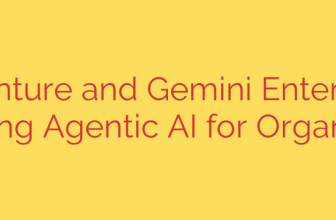
Beyond the Sandbox: The New Security Model for Powerful AI Agents
Autonomous AI agents are poised to revolutionize how we work and live. Imagine a digital assistant that can not only draft an email but also autonomously book your entire vacation, manage your investment portfolio, or debug complex code on your behalf. This is the promise of agentic AI—powerful systems that can reason, plan, and execute multi-step tasks to achieve a goal.
However, this incredible power comes with a monumental security risk. When you grant an AI agent access to your digital life, you are not just giving it a tool; you are handing it the keys to your kingdom. A small bug, a misunderstanding of your instructions, or a malicious attack could lead to catastrophic consequences, from sending a confidential draft to your entire contact list to deleting critical company files.
The core of the problem is that traditional security models are fundamentally broken in the age of AI. They were designed for predictable software, not for intelligent, autonomous agents whose actions can be emergent and unpredictable.
Why Our Current Security Measures Fall Short
We’ve relied on several methods to contain software, but they are ill-suited for the unique challenges of agentic AI.
- Sandboxing: This common technique isolates an application, limiting its access to the wider system. While useful, it’s a blunt instrument. An AI agent inside a sandbox can still cause immense damage within that sandbox. If its approved environment includes your email and files, it can still create chaos with the very tools you’ve given it.
- Human-in-the-Loop: This approach requires the user to approve every significant action the AI wants to take. While safe, it completely undermines the purpose of an autonomous agent. If you have to manually click “approve” for every step of a complex task, you’ve lost the efficiency and scalability that makes agents so compelling.
- Capability-Based Security: In these systems, programs are granted fine-grained permissions for specific actions (e.g., “permission to open network port 443”). This is too low-level for an AI. An agent thinks in high-level terms like “book a flight,” not in the dozens of technical steps required to do so. Forcing it to request micro-permissions would cripple its ability to reason and act effectively.
These models force a dangerous choice: either grant the AI agent overly broad permissions and hope for the best, or constrain it so much that it’s no longer useful. We need a better way.
The Future is Intent-Based Permissions
The solution lies in shifting our security mindset from actions to intent. Instead of giving an AI a list of things it’s allowed to do, we should grant it permission to achieve a specific goal. This is the core principle behind Intent-Based Permissions.
Think of it like hiring a contractor to remodel your bathroom. You wouldn’t give them a key to your entire house, your car, and your safe. You would give them a key that only unlocks the bathroom and perhaps the front door, and only for the duration of the project.
This is precisely how intent-based security works for an AI agent:
- The User States an Intent: The user gives a high-level command, such as, “Find and book the cheapest direct flight to Honolulu for next Tuesday.”
- A Secure, Temporary Environment is Created: The system—acting as a security kernel—spins up an isolated environment specifically for this task.
- Goal-Specific Tools are Provided: Instead of general access to the internet or your files, the agent is given a limited set of high-level tools relevant only to its goal. These might include an API to
search_flights(), another tocheck_prices(flight_details), and a final one tobook_ticket(confirmation). - Execution is Contained: The agent can only use these specific, pre-approved tools. It has no ability to read your emails, post on your social media, or access your local file system.
- Permissions are Ephemeral: Once the task is successfully completed (or fails), the temporary environment and all associated permissions are instantly destroyed.
This model allows the AI to operate autonomously to achieve the goal but strictly prevents it from taking any action, malicious or accidental, that falls outside the user’s original intent.
The Core Security and Usability Benefits
Adopting an intent-based model provides a framework for building AI systems that are both powerful and safe.
- True Principle of Least Privilege: This is the bedrock of good security. The agent is given the absolute minimum set of permissions required to complete its assigned task, and nothing more. The potential for damage is drastically minimized.
- Mitigation of Catastrophic Errors: The infamous “auto-reply to all” scenario becomes impossible. An agent tasked with drafting a single email reply simply wouldn’t have the permission or the tools to access your entire contact list and send a mass message.
- Enhanced User Clarity and Control: Users don’t need to be security experts to understand what they are approving. Granting “permission to book a flight” is intuitive and clear, unlike approving a dozen technical, low-level capabilities.
- Enabling Scalable Autonomy: This model resolves the conflict between security and autonomy. It allows the agent to work independently on complex tasks without constant human intervention, all while remaining within safe, predefined boundaries.
Actionable Steps for a Secure AI Future
As we integrate more powerful AI agents into our workflows and personal lives, we must demand a higher standard of security.
For developers and businesses, this means prioritizing the adoption of intent-based architectures when building or deploying AI agents. Don’t settle for legacy systems that grant overly broad access. The long-term risk of a security incident far outweighs the short-term convenience of using insecure models.
For users, this means being vigilant about the permissions you grant to AI applications. Scrutinize any tool that asks for sweeping access to your accounts, files, or data. Favor platforms that offer granular, task-oriented controls over your digital life.
The era of agentic AI is here, and its potential is boundless. But to harness it safely, we must move beyond outdated security paradigms. Intent-based permissions provide the robust, intelligent, and scalable framework we need to build a future where we can trust our AI assistants to be not just capable, but also reliably safe.
Source: https://www.helpnetsecurity.com/2025/10/10/agentic-ai-intent-based-permissions/








